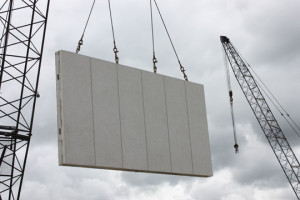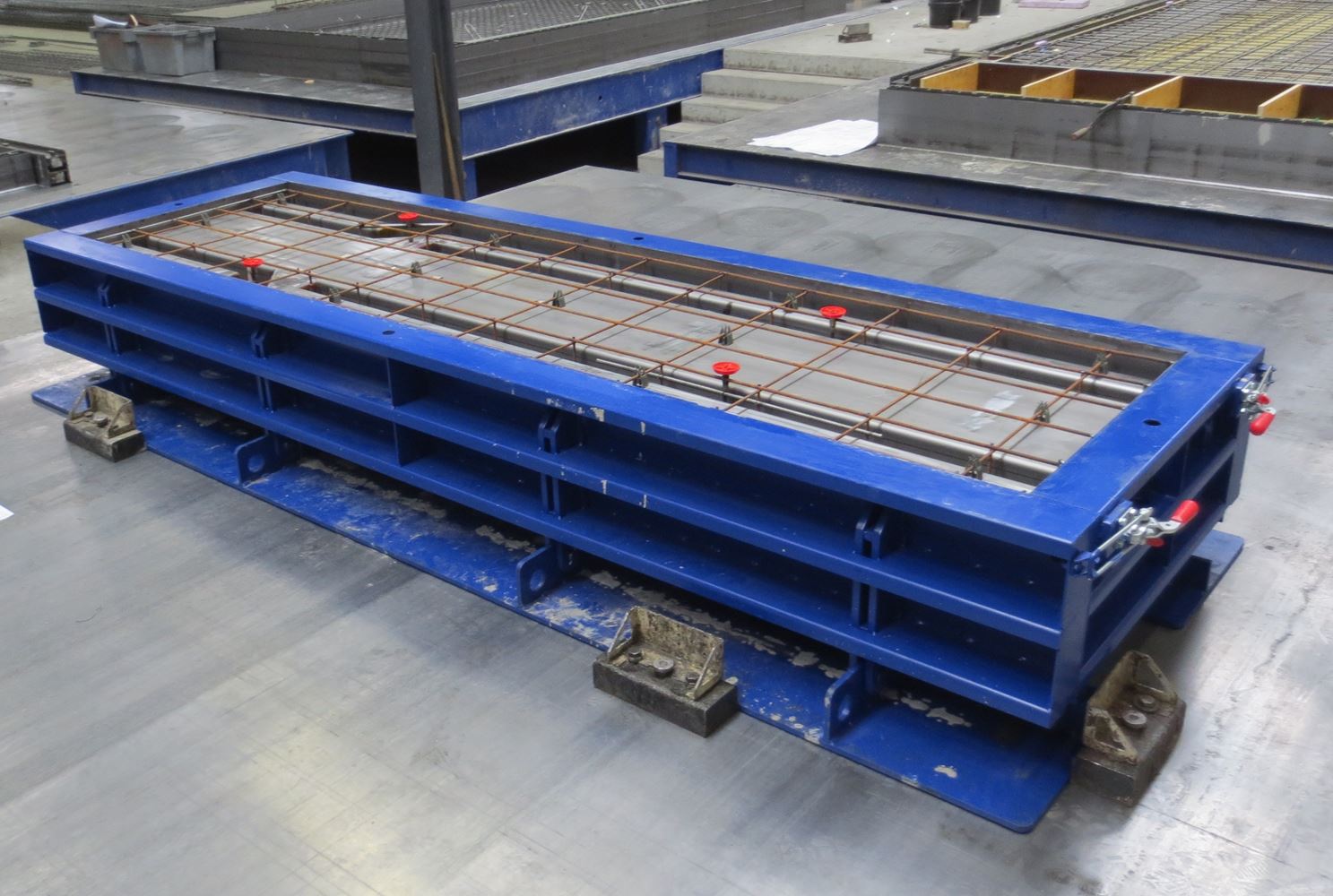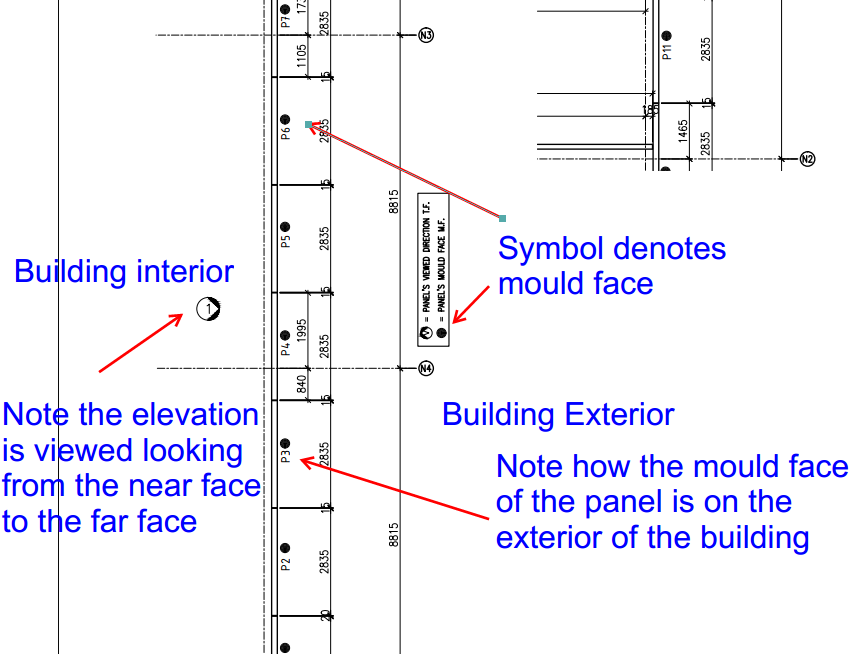The Mould Face
This post attempts to explain the following two questions, for those starting to learn the precast trade:
- A lot of fancy words are thrown around. Near face. Far face. And mould face. What does it all mean?
- How should shop drawings be marked vis-a-vis the mould face, and why should they be marked as such?
What is a precast panel?
These my friends are precast panels:

- You can build things quickly and cheaply, if you build with precast panels. Your other option is to fabricate on site. The problem with this is that it: (i) is more expensive, and (ii) the construction is a lot slower.
What is the mould face?
- First you have to understand how the panels are “fabricated” (i.e. how they are made). Concrete is poured into a mould, on a table. It looks something like this:

So then what is the near face / far face / mould face?
- The near face is the side of the panel which is exposed to the air. This is the face of the panel which you can see.
- The far face (or mould face), is the face of the panel which is lying on the table.
What is the significance of the mould face?
- The mould face has a smooth finish (or should have one).
- You do not want a building which has the ugly face of a panel exposed for everyone to see. The architect will be baying for your blood, and moreover it is a very costly remedy. Some precasters, in order to avoid this problem, “trowel” the near face (i.e. the face which is exposed to the air). “Trowelling” is when you smooth the surface of the panel with a tool so that it looks nice.
When you draw a panel, you want to indicate on your drawings that the mould face is on the building exterior.
- Why? So that the smooth side is seen by people and the ugly side is hidden from view.
- “But won’t people on the inside of the building also see the ugly side of the panel?” you ask. Not necessarily. Most of the time, the panel is not visible on the inside of the building because the architect will put up plaster or there will be something hiding the panel from view.
Standard Shop Drawing Practices
- People draw elevations assuming they are looking at the near face first, rather than the far face.
This diagram should certainly clear things up for you:

I hope you learned something. Any questions, please ask.
Leave a Reply